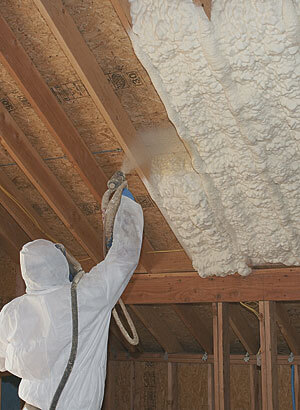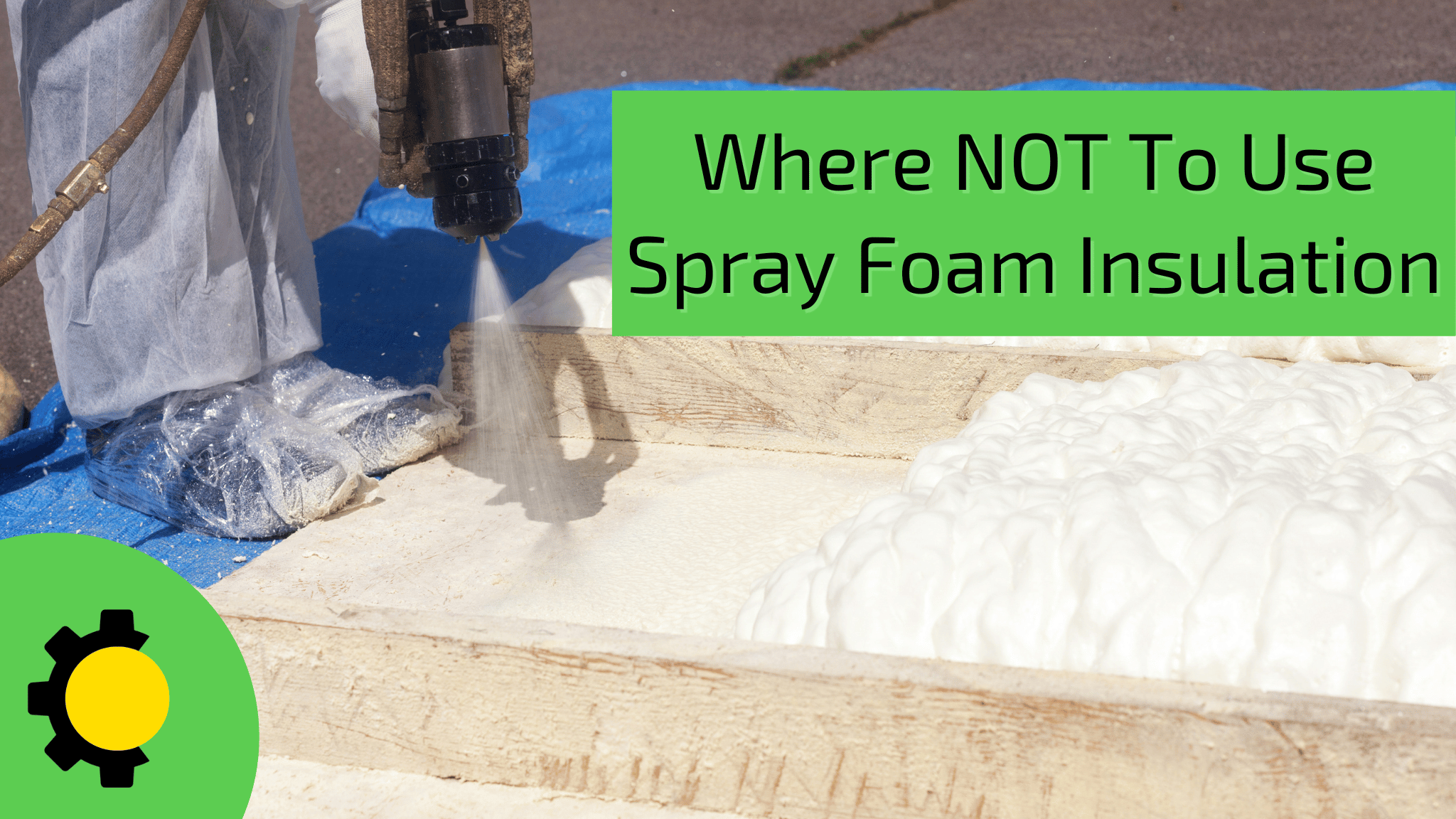Spray Foam: The Ultimate Service for Air Sealing and Insulation
Spray foam insulation has emerged as a leading option for effective air sealing and thermal insulation, offering a distinct mix of buildings that set it apart from standard methods. Its ability to increase and load voids makes it particularly efficient in stopping air leak, which can significantly impact power effectiveness. Understanding the full scope of its benefits, installation processes, and comparisons with various other insulation kinds is crucial for making informed decisions. As we explore these aspects, the ramifications for both new buildings and retrofits end up being significantly considerable. What variables should influence your selection?
What Is Spray Foam?
Spray foam is a functional insulation product that integrates the principles of air sealing and thermal resistance to boost power performance in structures. Composed largely of polyurethane or various other similar compounds, spray foam is used as a fluid that broadens upon contact with surface areas, developing a solid, constant layer of insulation. This unique property permits it to fill up gaps, splits, and spaces that conventional insulation materials might neglect, providing a superior air seal.
There are 2 primary kinds of spray foam: open-cell and closed-cell. Open-cell spray foam is lighter and much more flexible, supplying exceptional noise absorption and a lower R-value per inch - Spray Foam. In comparison, closed-cell spray foam is denser, giving a greater R-value, wetness resistance, and added architectural stability to building components
The application process typically entails specific equipment, making sure a seamless application that adheres to various substratums, including concrete, metal, and wood. This flexibility makes spray foam appropriate for both brand-new constructions and retrofitting existing frameworks. Its capacity to produce an impermeable barrier considerably adds to decreasing power consumption and boosting indoor air high quality, thus making it a preferred option among homeowners and contractors alike.
Benefits of Spray Foam Insulation
Among the most considerable benefits of spray foam insulation is its outstanding capability to develop a continuous air obstacle, which properly reduces energy loss. Unlike traditional insulation materials, spray foam broadens to load spaces and splits, guaranteeing that air leak is significantly minimized. This particular not only improves power performance but likewise leads to decrease utility expenses over time.
In addition, spray foam insulation offers remarkable thermal resistance, adding to a more secure indoor environment. Its high R-value per inch permits reliable insulation in constrained rooms, making it excellent for attic rooms, walls, and crawl spaces. Additionally, the moisture-resistant buildings of spray foam assistance prevent mold and mildew and mildew development, advertising much healthier living conditions.
One more important advantage of spray foam insulation is its sound-dampening high qualities (Spray Foam). It properly minimizes sound transmission between areas, creating a quieter and more comfortable home environment. The toughness of spray foam also sticks out, as it does not sag or settle in time, keeping its efficiency throughout its lifespan
Just How Spray Foam Works
Recognizing exactly how spray foam insulation works is important for appreciating its effectiveness in air securing and thermal resistance. Spray foam insulation includes 2 primary parts: isocyanate and polyol material. When these parts are mixed, they go through a chemical reaction that causes the material to broaden rapidly, producing a thick foam that loads voids, cracks, and tooth cavities.
As the foam increases, it follows surface areas, developing an impermeable seal that considerably minimizes air seepage. This particular makes spray foam insulation highly efficient at protecting against drafts and moisture penetration, which can result in power loss and damages with time. Additionally, the closed-cell variant of spray foam provides remarkable thermal resistance as a result of its rigid structure, efficiently reducing warm transfer.
The Full Report special residential or commercial properties of spray foam allow it to adapt irregular surfaces, guaranteeing detailed protection and a smooth obstacle. Therefore, spray foam insulation not only improves power performance but additionally adds to boosted interior air high quality by reducing the build-up of contaminants and irritants. Eventually, understanding the technicians behind spray foam underscores its function as a superior choice for insulation and air securing in both business and domestic applications.
Installment Process Review

Prior to installment, the space needs to be sufficiently cleansed and prepped, ensuring that surfaces are without particles, dust, and moisture. Due to the fact that impurities can jeopardize attachment and general performance, this action is critical. When the area is prepared, the application involves mixing both elements of the spray foam, which expands upon get in touch with and fills voids successfully.
Trained specialists ought to perform the setup, using customized tools to make sure uniform insurance coverage and optimal thickness. Safety and security safety measures, including using protective gear and making certain appropriate ventilation, are crucial during this procedure. After application, the foam generally remedies swiftly, creating a strong barrier that improves energy effectiveness.
Contrasting Spray Foam to Standard Insulation
When reviewing insulation options, spray foam insulation stands out in comparison to conventional products such as fiberglass and cellulose. Unlike fiberglass and cellulose, which can enable air seepage, spray foam broadens upon application, loading crevices and voids to produce an airtight seal.
In addition, spray foam supplies a higher R-value per inch than traditional insulation kinds, providing more effective thermal resistance in a thinner account. This characteristic is specifically helpful precede with minimal cavity deepness. Spray foam is immune to moisture and mold and mildew development, which can be a significant worry with cellulose and fiberglass, particularly in moist atmospheres.
Nonetheless, spray foam insulation usually lugs a higher upfront expense than its conventional equivalents. go to this website House owners should consider this preliminary investment versus long-lasting energy cost savings and performance advantages. Inevitably, while both insulation types offer their purpose, spray foam becomes a much more advanced service for modern insulation requirements, specifically in regards to air sealing and thermal efficiency.

Conclusion
In recap, spray foam insulation stands for a highly effective service for accomplishing optimal air sealing and thermal resistance. Its unique homes, consisting of wetness resistance and noise dampening, make it suitable for various applications in both new constructions and retrofitting projects (Spray Foam). Although the initial costs might be higher compared to conventional insulation materials, the long-term benefits, such as considerable energy cost savings and boosted indoor air top quality, justify the investment and emphasize its value in contemporary structure methods.
Spray foam insulation has actually arised as a leading solution for reliable air securing and thermal insulation, offering a distinct mix of buildings that set it apart from typical approaches.Spray foam is a flexible insulation product that integrates the principles of air securing and thermal resistance to improve power effectiveness in structures.When evaluating insulation choices, spray foam insulation stands out in comparison to conventional materials such as fiberglass and cellulose. Ultimately, while both insulation kinds serve their purpose, spray foam emerges as a much more sophisticated option for modern insulation requirements, particularly in terms of air securing and thermal efficiency.
In recap, spray foam insulation represents a very effective solution for attaining optimal air securing and thermal resistance.